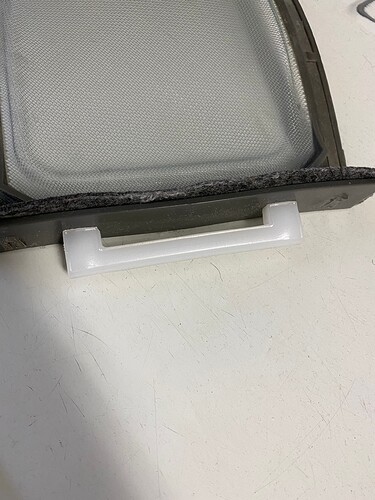I’m in the same boat as you–newly retired with ambitious plans in my shop. I have been a woodworker for over 20 years, started building cabinets and other furniture, then progressed into lutherie and mostly use my shop for guitar building these days. Like you, I researched the different offerings in the “hobbyist” level machines, and ended up with an XL 3. I’ve done some upgrades to it such as swapping out the z axis for one with a lead/ball screw–well worth the investment, so if you’re looking to buy, go ahead and get something with a mechanical z rather than belt drive. Shapeoko offers a bundle of options and the support is second to none. As noted, this is an active forum with many experienced members who have done just about everything imaginable with their machines.
As more woodworkers get into CNC, there is less and less “stigma” associated with owning one. I can remember the time when you were not considered a “real” woodworker if you used one, and the same goes for luthiers. Now, more and more people are adding them to their shops as a “tool” arsenal support member, and they use them for many operations that were once reserved for all the other traditional power tools as well as doing new and creative things once unimaginable to the traditional hobbyist woodworker.
What I have found, in both furniture and guitar building, is you more often than not will fall into using the CNC as a complement rather than the be-all end-all tool. That is, while it will do almost anything you can do with a table saw, band saw, router, etc., there are still operations that are much better and faster done with the traditional tools. I’ve done joinery, for instance, on my Shapeoko with good results, but set-up and other factors often make it more easily done with, say, a router table or dado blade in the table saw. The other thing to know is that with the hobby level CNC, you cannot expect to hog out lots of cavities or cut a lot of big profiles in a quick manner. These machines are not like the ones used in the commercial shops where they throw a sheet of 3/4" plywood on the bed or a 2" chunk of mahogany on the bed and in one operation cut out all the parts for a cabinet or hog out a bunch of cavities in a guitar body. The Shapeoko will do it, but it takes time, and you have to know when and when not to use the machine for best effect. As a guitar builder, I learned this early on. For instance, I rarely cut out my solid-body guitar bodies with the Shapeoko because cutting a profile into 2" of mahogany with a 1/4" endmill takes a long time and really taxes the machine. Rather, I use it to accurately place things like pickup cavities, bridge mounting holes, accurately cut neck pockets, etc., then fall back to the bandsaw and router table and templates for cutting and finishing the outline. On the other hand, cutting a neck profile and shaping the back of a neck takes time on the Shapeoko, but the precision and “repeatability” of results is worth the tradeoff. And, should I mention, that you can’t beat a CNC for precision inlay work, adding decorative accents, and cutting fret slots (which must be cut to high precision for accurate tuning).
Finally, expect (unless you have advanced computer skills or experience with other CAD programs) a steep learning curve for use of the software that creates your designs and programs the machine for doing its job (CAD/CAM). I’ve found Carbide Create suitable for really simple things like cutting shapes, v-carving signs, and adding decorative details on furniture parts. It’s a good starting CAD/CAM program and will get you up and running pretty quickly. But, if you want to do more intricate things, and especially if you get into 3-D carving, profiling, etc., you are going to want something more advanced and more suited to intricate and accurate design. Some people like the Vetric programs, and they do a good job, but at a price. I prefer Autodesk 3D 360. For now, the hobby version is free, and its capability rivals some of the highest level CAD/CAM programs that are used in large commercial shops. It interfaces well with the Shapeoko, and there is a large body of “how to” videos available on Youtube for teaching and learning. I use it for both furniture design and lutherie. It takes a while to learn all the intricacies of the design features, and CAM can also be a beast if you are doing complicated machining, but it really excels at design modeling and transferring that design into parts that can be machined on the Shapeoko. For furniture building, I particularly like the “drawing” feature that allows addition of accurate measurements for creating part cutout lists, etc.
Good luck on your retirement journey. So many people told me I would be bored in retirement, but they have been so far from wrong.

